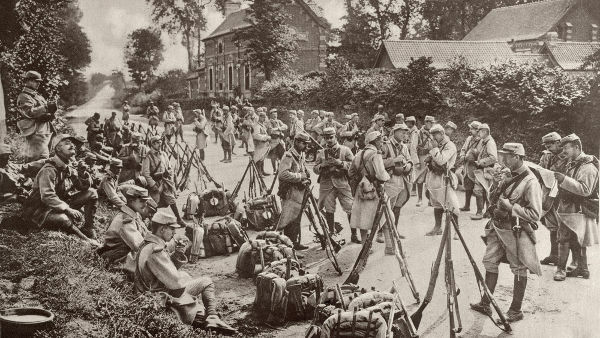Throughout history there have always been conflicts, battles and wars between different societies, however, before the 20th century, a large part of the military conflicts did not so much victimize the civilian population how the 20th century wars. But what happened to increase the number of civilian people killed, that is, people who are not directly involved in the clashes?
Like industrial and technological development, from the second half of the 19th century, new armaments were produced and humans were concerned with increasing the lethality and effectiveness of their weapons.
From the World War I, the obligation of the military enlistment compulsory, the development of new weapons (machine guns) and the adaptation of means of transport such as airplanes, for use in battle, greatly increased military power in wars. The plane became a key part of an army that wanted great victories, however, it increased the capacity of victimize innocent civilian populations, with air attacks that often did not hit their targets, but cities whole.
The insertion, in the 20th century, of the submarines and warships, made possible the agility in the displacement of troops, increasing the military power. During World War I, another deadly military resource was used for the combatants and the civilian population for the first time: the battle tank. He reached places previously unreached by land. Along with planes, tanks were mainly responsible for attacks on cities and civilian deaths.
During World War I, an increase in civilian casualties began: 15% of those killed were people not directly involved in the conflict. In World War II, the number of civilian deaths rose sharply to 65%. Over the course of the 20th century, new wars took place, increasing the number of deaths among the civilian population.
In the 1980s and 1990s there were several wars. The insertion of military-technology, according to some specialists in wars, would be essential to reduce the death of the civilian population, as the new laser weapons and by waves and new air technologies with aircraft imperceptible to radar, would allow greater precision in attacks, however, that's not what's coming taking place. During conflicts in Africa and the Middle East in the 1990s and 2000s, 90% of those killed were civilians.
The precision in the attacks, which many experts believed would reduce civilian casualties in wars, turned out to mean the opposite. In addition, the power of range and accuracy of weapons increased, providing more lethality to wars.
Do not stop now... There's more after the advertising ;)
By Leandro Carvalho
Master in History
Would you like to reference this text in a school or academic work? Look:
OAK, Leandro. "War against Civilians"; Brazil School. Available in: https://brasilescola.uol.com.br/historiag/guerra-contra-civis.htm. Accessed on June 27, 2021.

